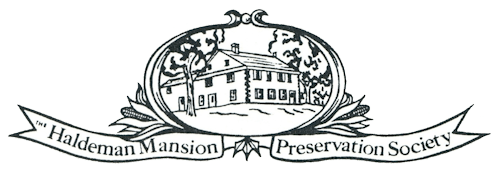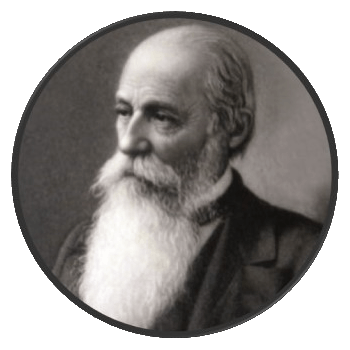SAMUEL STEMAN HALDEMAN
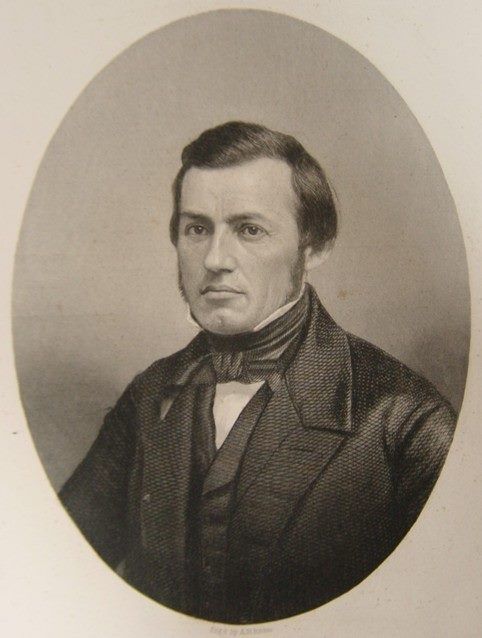
Samuel Steman Haldeman
(1812 - 1880)
(Commonly Misspelled Samuel Stehman Haldeman)
Samuel Steman Haldeman, born at the mansion in Bainbridge on August 12, 1812, was the oldest of seven children of Henry Haldeman (1787-1849) and his wife Frances Steman (1794-1826). His father, who appreciated culture, endeavored to foster a love of learning in his children. His mother, an accomplished musician, died when Samuel was fourteen years of age.
Samuel was educated in the public schools, at the classical academy in Harrisburg and at Dickinson College, Carlisle, PA. He found college routine irksome and left after two years at the age of eighteen saying, "I cannot learn from others, I must see for myself." Thereafter he educated himself by attending lectures, recording observations of bird habits, learning to stuff birds and mammals from a traveling Methodist minister, resulting in a large collection of specimens in natural history and also a scientific and linguistic library.
As a child Haldeman had a penchant for collecting specimens from nature and Native American stone implements found on and near the mansion site, keeping them in his own museum. His collection included skeletons of rabbits, opossums, muskrats, and field mice, which he prepared by boiling the carcasses. It also included fresh-water shells from both banks of the Susquehanna River and its islands. A letter from Samuel to a friend, dated 1844, says, "I collected shells on the banks of the Susquehanna long before I knew the meaning of genus and species." We'll see later what an influence these early shell-collecting days on the Susquehanna River had on Haldeman's scientific scholarship.
After his marriage in 1835 to Mary A. Hough of Bainbridge, he moved to a new residence at the base of Chickies Rock, Marietta. Not only did he design the stately home built by his father, he laid out the grounds with native specimens of trees and shrubs gathered from the surrounding woods, and some foreign varieties, all of which were planted with his own hands.
Not having a particular fondness for business, he continued his studies of nature, but did assist his father in a saw mill and later became a silent partner in the iron business with his brothers. He wrote articles on anthracite furnaces for Silliman's Journal, and contributed sound and practical suggestions for improvements to both the mill business and construction of the blast furnace.
At the age of twenty-three, Samuel contributed to the Lancaster Journal an article refuting Locke's "Moon Hoax". From then on, his life was devoted to science. For forty-five years he spent most of the time in his library, many times working sixteen hours a day. In 1836, Professor Haldeman became an assistant on the State geological survey of New Jersey, and was later transferred to a similar position in Pennsylvania. During extensive geological work, he discovered a new genus and species of fossil plant.
Geology did not engross his whole attention, as he was now busy collecting and studying shells, and made substantial contributions in this field through an expertly illustrated massive work of copperplate engravings, drawn and colored from the original shells and living animals. This was finished in 1845.
One professional association of Samuel Haldeman during this period of 1840 to 1850 is particularly significant for his scientific development as well as for the development of American science. In 1844 he became a member of the American Association for the Advancement of Science, a fledgling organization just beginning to function. At the request of this organization, he prepared a paper entitled "Enumeration of the Recent Freshwater Mollusk Which are Common to North America and Europe, with Observations on Species and their Distribution." Fifteen years later, an obscure British scientist had the following to say about this paper, "In 1843-44 professor Haldeman (Boston Journal of Natural History, United States, Vol. IV, pg. 468) has ably given the arguments for and against the hypothesis of the development and modification of species: he seems to lean towards the side of change." This scientist was Charles Darwin and he was writing in the preface to his Origin of Species, one of the most influential and controversial science books ever published. Samuel was said to have been the only American Naturalist with whom Charles Darwin corresponded, and whose opinion Darwin regarded as authoritative."
Samuel continued to write important and prize-winning essays and articles in philology, phonography, ethnology, natural history, and archaeology. His writings in all fields of science are literally innumberable, with well over one hundred articles on such scientific subjects as conchology and crustacea (the study of mollusks and shells), entomology (the study of insects), arachnidae (the study of spiders), annelids (the study of earthworms, leeches and related animals ), geology, chemistry and archeology.
He became professor of zoology at Franklin Institute of Philadelphia in 1841; chemist and geologist of the Pennsylvania Agricultural Society in 1852; professor of natural history at the University of Pennsylvania from 1850-1853; and the same position at Delaware College at Newark, Delaware from 1855-1858; and professor of comparative philology at the University of Pennsylvania from 1876 until the time of his death. This university conferred upon him the degree of Doctor of Laws. Professor Haldeman was among the first to undertake the spelling reform of English words. He corresponded with Noah Webster, who credited him with many words and definitions in his dictionary, also contributing to Worchester's Dictionary, the National Dictionary, and Johnson's Cyclopedia. He studied the languages of our Indian tribes, and of various nations and tribes of other parts of the world. He considered his most outstanding accomplishments to have been his investigations in philology (the study of the evolution of speech sounds).
Dr. Haldeman was elected to twenty-eight honorary scientific societies, both in this country and abroad. With others, he formed the Entomological Society of Pennsylvania and was president of the American Philological Association. Letters of inquiry from all parts of the world came across his desk; publishers asking opinions of books; writers begging information; teachers with a pronunciation to be settled; naturalists forwarding packages of shells, insects, or minerals for identification; farmers and others sending clays to be analyzed; requests for lectures; requests for data from scientific newspaper articles; request for reviews from editors, and so on.
Samuel Steman Haldeman died on September 10, 1880 at the age of sixty-eight, at his study table, of heart paralysis. He left a wife, two sons, and two daughters. He is buried beside his wife in the Haldeman family plot in the Marietta Cemetery. At a meeting of scientists following his death, this remark was made of him, "He was no ordinary man whom you might compliment with a passing respectful obituary notice - in science and letters he was a great man." - HMPS Records
Interesting and Notable Fact...
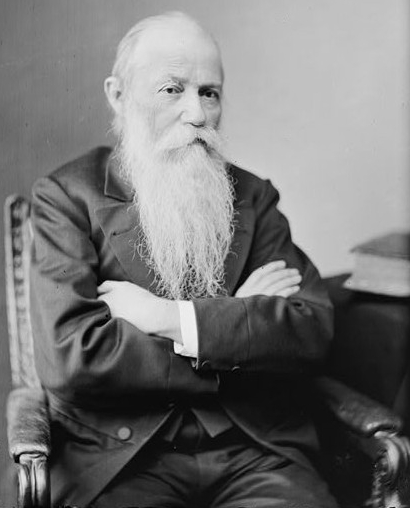
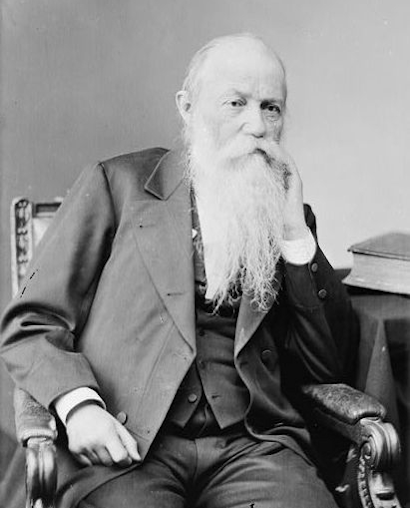
These two photos were provided to the HMPS by Jason Shuff. They were taken of Samuel Haldeman by the famed photographer Matthew B. Brady. It is quite an honor that our Samuel was photographed by Brady. Brady who was the favorite photographer of Abraham Lincoln is also known as the father of photojournalism. The exact dates these photos were taken is not known.
The Matthew B Brady glass negative is on file at the National Archives in Washington, DC.
The other photo of the youthful Professor Haldeman is at the Academy of Natural Science in Philadelphia 1842.
Support HMPS
